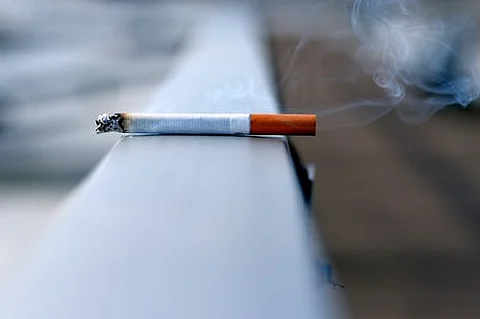

Third hand smoke refers to residual nicotine and other hazardous chemicals that contaminate the indoor environment after smoking. Think of the lingering smell you’ve probably encountered when handling the clothes of a person who smokes a pack a day, or when checking into a tidy but cigarette-friendly hotel room.
Scientists at the U.S. Department of Energy’s Lawrence Berkeley National Laboratory (Berkeley Lab) first identified thirdhand smoke as a potential health hazard a decade ago. Their newest study develops more quantitative insights into its long-term health risks. They found that concentrations of toxic chemicals lingering in indoor environments where cigarettes have been smoked can exceed risk guidelines from the State of California, meaning that non-smokers can be exposed to health risks by living in contaminated spaces.
The study was published in the journal Environmental Science & Technology. Alongside Berkeley Lab scientists, co-authors on this work include collaborators from the University of California San Francisco, the University of California Riverside and San Diego State University. These teams are members of the California Consortium on Thirdhand Smoke, funded by the Tobacco-Related Disease Research Program, which is managed by the University of California.
Berkeley Lab’s researchers previously discovered that aerosolized nicotine, released during smoking and vaping, adsorbs to indoor surfaces, where it can interact with a compound present in indoor air called nitrous acid (HONO) to form strongly carcinogenic compounds called tobacco-specific nitrosamines (TSNAs). Accumulated nicotine on household surfaces can continuously generate TSNAs, long after smoke clears the room.
TSNAs enter the body through multiple pathways. The study estimated doses through inhalation and dust ingestion using TSNA indoor concentrations measured by Consortium investigators and other authors. In addition, the team focused on dermal exposures, which are more difficult to measure, and for which there is much less information. These dermal exposures can happen directly through skin contact with polluted air or a contaminated surface harboring TSNAs – for example, while sleeping on smoky bed sheets. But they can also take place via epidermal chemistry, when nicotine already settled on the skin reacts with environmental HONO to form TSNAs right on the body’s surface.
The study found that exposure through all of these pathways – inhalation, dust ingestion, and dermal absorption – under typical indoor conditions can result in NNK doses that exceed health guidelines known as “No-Significant Risk Levels” established by California’s Office of Environmental Health Hazard Assessment as part of Proposition 65. These cumulative exposures can contribute to an elevated cancer risk. Dermal exposure routes contribute significantly to TSNA intake at levels that can be comparable to or even higher than inhalation. (NS/Newswise)
